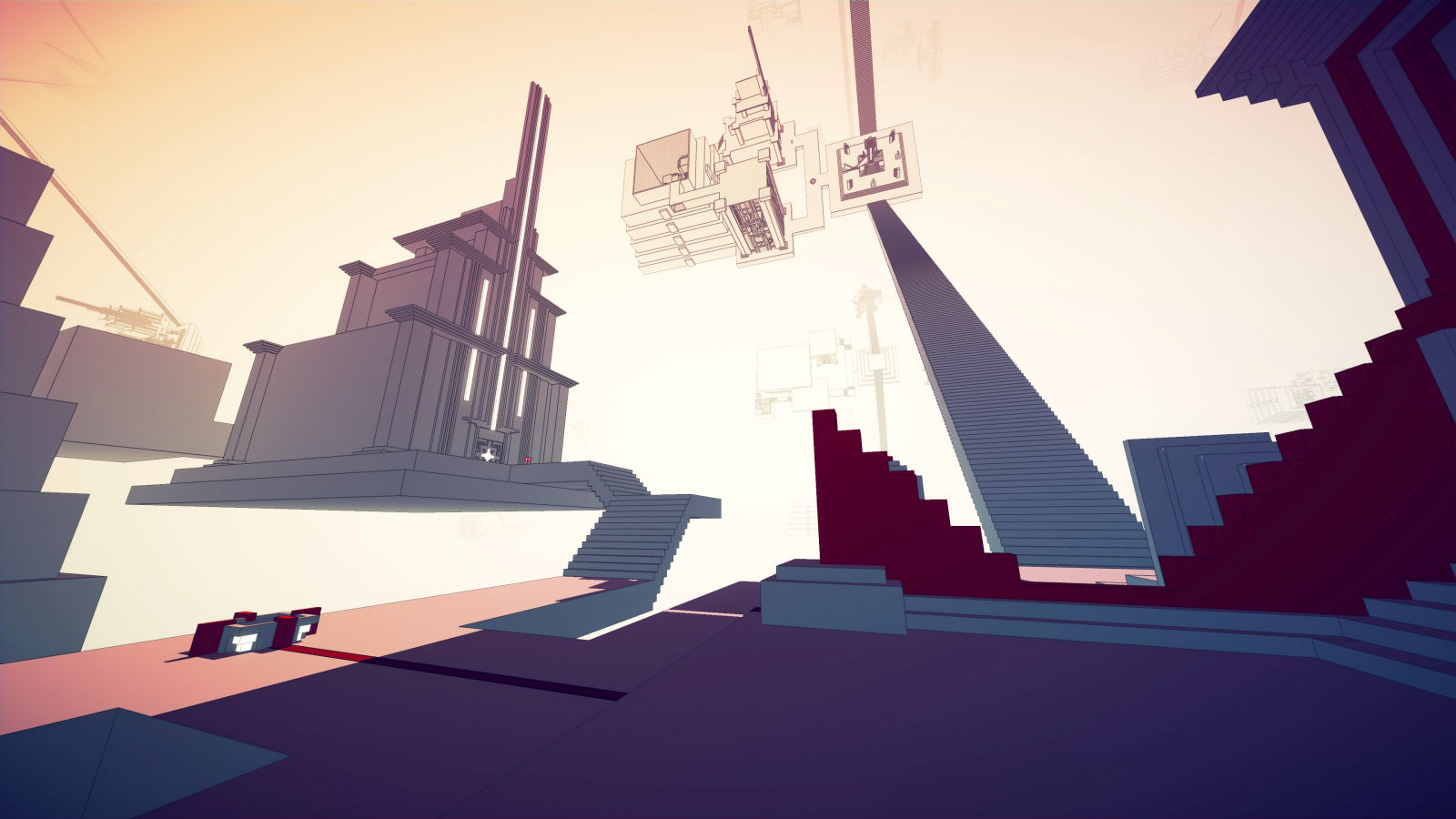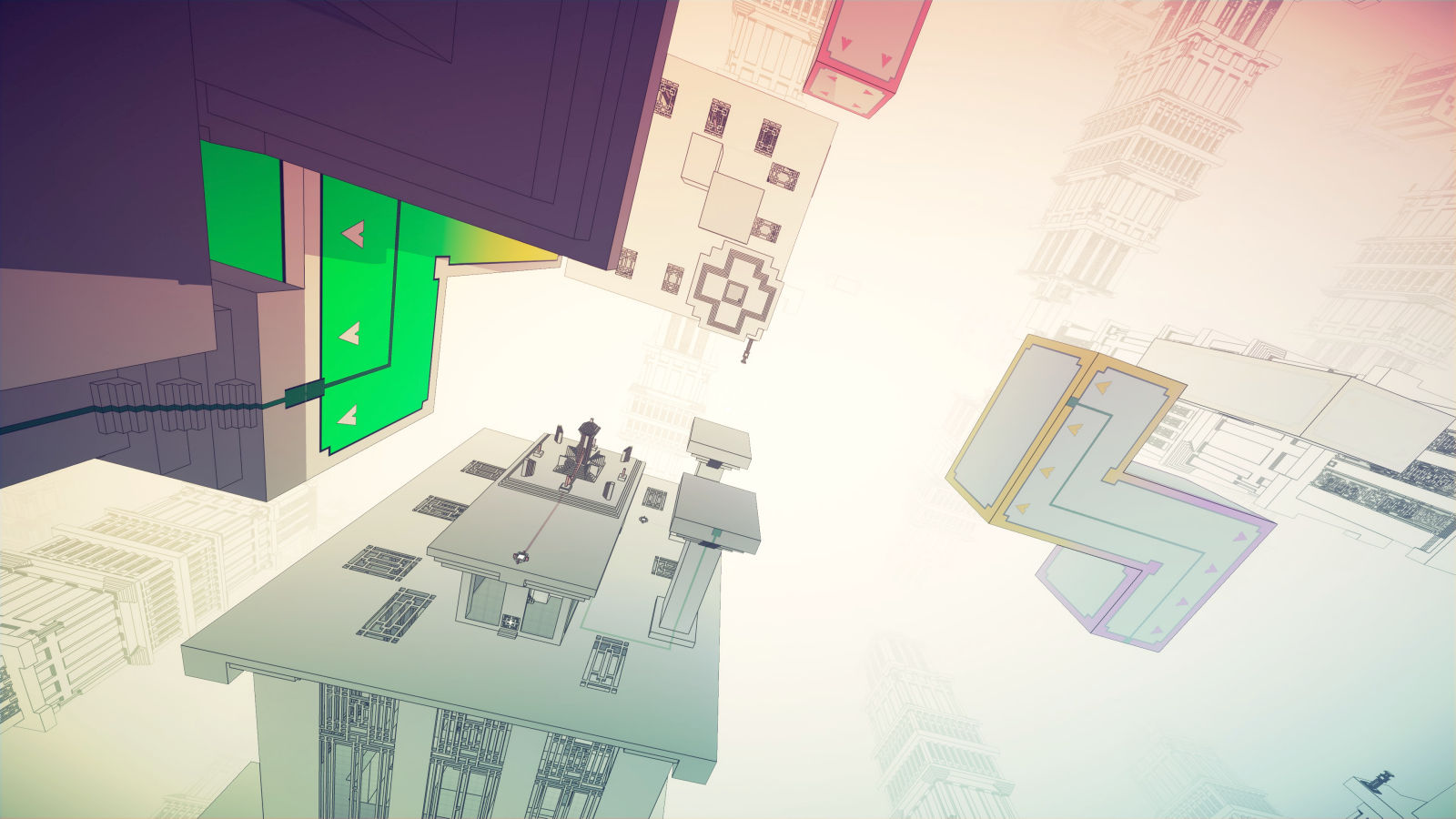Developer: William Chyr Studio | Released: 2019 | Genre: Puzzle, First Person
Do you know the feeling in a FPS or a first person puzzle game when you suddenly walk into an exceptional open space with enormous structures disappearing into the horizon, and you stop for a moment to take in the awe inspiring vista? This game not only takes that to another level, it does it virtually all the time.
The game reminded me of both Antichamber and Fez, both games I also completed. Antichamber mostly because of the graphical style, and Fez because of placing cubes at the end of levels for great effect. But the game was definitely its own. It supposedly took William Chyr 7 years to make it, and it’s understandable. Apart from the tech itself, just creating those infinite levels must have been a daunting task.

The game was a mixture of solving local puzzles and navigating infinite levels that wrap into themselves like a lithograph by Escher, repeating its structures as you fall through it. The direction of gravity changes when walking up to a wall and pressing space. Now the entire level tilts around, turning walls into floors. Falling not only doesn’t kill you, it’s often necessary to navigate the enormous levels since you can’t jump.
See that ledge over there? Drop down for a while until the level repeats itself, then steer towards the ledge as it approaches again and land. The sound of wind and a fear of heights still makes it feel dangerous.
Apart from figuring out how to navigate the levels by dropping and walking, there are also local puzzles. Most of these involve moving small colored cubes into color sockets. There can be more than one socket required for opening a door, and there’s a twist – the cube has an arrow indicating the gravity direction that allows for handling it. As soon as you twist the gravity 90 degrees, the cube turns white and freezes in place. This makes for cunning puzzles where one colored cube can be arranged in one gravity direction, then twisting gravity and using the now frozen cube as a ledge for another cube to reach a socket.

I must admit I wasn’t always a fan of that kind of cube puzzle. It got old fast.
Later in the game, cubes can be fetched from cubistic trees as fruits, and small brooks of water can be redirected by cubes – either for reaching a spot where another tree can be grown, or a water wheel spins some cogs for opening the next door. After solving a number of cube puzzles, lasers turn on unlocking a god cube that can then be fetched and placed elsewhere for solving the level.
There are more puzzles variations, but you’ll have to open the spoiler section to learn about those.
Placing cubes and diverting brooks of water are not the only kind of puzzles. One level also had a small ball that had to be led through its tube by twisting the gravity. As soon as it reached the end of its system of tubes, a door opened. The tubes were even spread out in one entire level.

There were also beams of color change, for changing the color of a cube (which also changed its direction of gravity and therefore instantly froze it in the air) and there were even cubes with two colors for each half, with the active one determined by the direction of gravity.
There were force fields that could be switched on or off with a cube in a socket.
Later levels had enormous Tetris bricks with direction arrows on them. These moved through the levels as the gravity was changed, sort of like shipping containers dropping down for a distant boom when hitting something. The bricks had wiring in them and they could be moved towards a platform or another brick for touching a colored wire. This could open e.g. a door. The first level I found these bricks was confusing and it was the only place I needed a tip in a forum. Turns out I had actually done the local puzzles, I just needed to find the laser and activate its beam so the god cube was free for the taking.

William Chyr himself even admitted finding that laser was confusing.
What was the point of that “museum” corridor with small level structures locked up in glass cubes? Could I have done anything in there or was that just sort of there?
Pros
- Wonderfully infinite levels intertwined like something out of an Escher lithograph.
- Dropping far down on other platforms is an ingenious way to navigate the epic levels.
- Cute water brook diversion puzzles serves as a variation on the classic mirror puzzles.
- The frame rate was always fine no matter how big the level was, and I have an 8 year old PC.
- Suitable ambient music that often changes when something interesting happens.
- A pretty demo scene style ending leaves a silly smirk on your face.
Cons
- Some of the cube puzzles can be a bit too much, especially where stacking is required.
- Often an enormous level can be overwhelming and it takes time to grasp what you need to do.
- The final level felt slightly too long, but maybe I just had enough at that point.
The famous Roger Ebert didn’t believe games could be art. If only he had still been alive, he should have seen this game. If that wouldn’t have changed his mind, I don’t know what could have.


